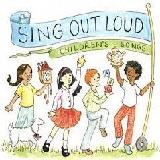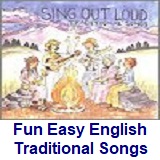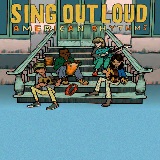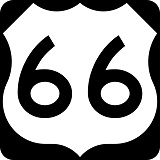|
Connecticut Stories |
|
|
Louis' Lunch
Do you love hamburgers? Do you know how they were created?
The first hamburgers in U.S. history were served in New Haven,
Connecticut, at Louis' Lunch sandwich shop in 1895. Louis Lassen,
founder of Louis' Lunch, ran a small lunch wagon selling steak
sandwiches to local factory workers. Because he didn't like to waste
the excess beef from his daily lunch rush, he ground it up, grilled
it, and served it between two slices of bread -- and America's first
hamburger was created.
The small Crown Street luncheonette is still owned and operated by
third and fourth generations of the Lassen family. Hamburgers are
still the specialty of the house, where steak is ground fresh each
day and hand molded, slow cooked, broiled vertically, and served
between two slices of toast with your choice of only three
"acceptable" garnishes: cheese, tomato, and onion.
Want ketchup or mustard? Forget it. You will be told "no" in no
uncertain terms. This is the home of the greatest hamburger in the
world, claim the owners, who are perhaps best known for allowing
their customers to have a burger the Lassen way or not at all. |
|
|
The Mark Twain House
Can a house have a heart and soul? Can people love their house even
if others think it's odd?
In 1871, writer Mark Twain moved to Hartford, Connecticut, to be
closer to his publisher. He rented a home in Nook Farm, a thriving
literary community at the western edge of Hartford. In 1873, Twain,
whose real name was Samuel Langhorne Clemens, and his family
purchased land on Farmington Avenue in Nook Farm and hired a New
York City architect to design a house.
As the house was being built, the local newspaper noted that "it is
one of the oddest looking buildings in the state ever designed for a
dwelling, if not in the whole country."
Twain once said that the house "had a heart, and a soul. ... It was
of us, and we were in its confidence and lived in its grace and in
the peace of its benediction. We never came from an absence that its
face did not light up and speak out its eloquent welcome -- and we
could not enter unmoved."
Twain lived and worked in the house from 1874 to 1891. During this
time he wrote The Adventures of Tom Sawyer, The Adventures of
Huckleberry Finn and A Connecticut Yankee in King Arthur's Court. Do
you think his unique house influenced his writing? |
|
|
Sisu and Creativity-The Essence of Finnish
Immigrants in Eastern Connecticut
Do you have sisu? Have you ever even heard of it before? Sisu is a
Finnish word that describes someone who works hard and has
determination and perseverance.
This word came to America with Finnish immigrants who began to
settle in Connecticut in the 1920s. The immigrants were escaping
poverty at home and looking for land, which they were able to buy
cheaply from Yankee farmers. Because they had sisu they became
successful in their new community.
Finnish sisu helped the immigrants farm rocky land and hand-pour
cement foundations for their homes and other buildings. Many made a
decent living selling chickens and eggs. Their hard work and
perseverance also helped them build social halls where immigrants
could meet others with similar backgrounds and languages. A group
called the Finnish American Education Association bought land and
built social halls in various parts of Connecticut.
In 1987, inspired by a desire to prevent the sale of their Finnish
hall for unpaid taxes, the Finnish American Heritage Society was
formed in Canterbury. To this day their mission is to promote
Finnish heritage, culture and language -- all of which they do with
a combination of hard work, determination, and perseverance.
The next time you have a very difficult job to do, think sisu! |
|
|
The Beckley Blast Furnace: East Canaan,
Connecticut
The furnace in the picture is a blast, literally. A blast furnace
increases combustion with a blast of air.
Blast furnaces contain a hearth at the bottom that is shaped like a
melting pot; a middle zone, called a bosh, a vertical shaft (the
stack) that extends from the bosh to the top of the furnace; and the
furnace top. The bosh is the hottest part of the furnace. Molten
iron gathers in the hearth, which has a tap hole to draw off the
molten iron and, higher up, a slag (residue) hole to remove the
mixture of impurities.
John Adam Beckley built this furnace in 1847 for the production of
pig iron, a crude kind of iron that is refined to produce steel or
wrought iron. In 1919, after 72 years of operation, the Beckley
Furnace closed.
In 1978, the Beckley Blast Furnace in East Canaan, Connecticut, was
put on the National Register of Historic Places. Connecticut bought
the furnace in 1946 with the intent of preserving the stack but
didn't restore it until 1999. The hearth has been completely rebuilt
with a cutaway section for visitor viewing. The blast furnace is a
significant attraction on the Iron Heritage Trail in Northwestern
Connecticut, New York, and Massachusetts. |
|
|
Monday Night Jazz Series and Greater Hartford
Festival of Jazz
If you were to go to Hartford, Connecticut, on a Monday night in the
summer, you could attend the oldest continually running jazz series
in the country. The kids you see in this photo are practicing, or in
jazz lingo, jamming, for the Monday Night Jazz Series.
As the sun goes down and the stars come out, you can listen to the
uniquely American musical form of jazz at the Monday Night Jazz
Series in Bushnell Park, in Hartford. This summer concert series
presents nationally and internationally renowned musicians as well
as local talent in celebration of all kinds of jazz music. Many
levels of performers -- from cutting-edge artists to youth from
local schools -- take part in the series.
Run by volunteers, the series has been held in Bushnell Park since
1966. The Greater Hartford Festival of Jazz, a weekend of free
performances, was initiated in 1991by the organizers of the Monday
Night Jazz Series, in honor of its 25th anniversary. |
|
|
Connecticut's State Song
How did a song help the Colonial soldiers win the Revolutionary War?
Connecticut's state song is "Yankee Doodle." This popular song has
an unusual history. The words were apparently written by an
Englishman during the French and Indian War in 1755. Originally, the
tune made fun of the poorly dressed and ill-equipped New England
soldiers. During the Revolutionary War with England, however,
Americans slightly rewrote the words to make fun of the British
soldiers. The song boosted the soldiers' morale (pronounced
"more-al"; it refers to a person's enthusiasm or mood) and was a
source of pride for the American soldiers. Good morale is important
during a war so that people don't get discouraged and give up.
Anything that could be done to boost morale was a good idea. |
|
|
Parade Spectacular
Have you ever seen a parade with floating balloons in the shape of
characters like Gumby or Dick Tracy? Do you know why such big
balloons float in the air? It's because they are filled with helium,
and helium gas is lighter than air so it floats.
Gumby, Dick Tracy, Rocky and Bullwinkle, and many other giant
balloon characters float through downtown Stamford, Connecticut, in
the annual Parade Spectacular. The festivities include marching
bands, dancers, and more. The parade falls at the same time as other
holiday events in town, from the lighting of the Christmas tree to a
North Pole adventure land in Latham Park.
Stamford's annual holiday balloon parade started in 1993 as a small,
hometown affair and has become one of the largest helium balloon
parades in the country, with 30 giant helium balloons floating above
the city and people coming from all over the region to see them. In
1999, there were an estimated 250,000 spectators. |
|
Source:
Library of Congress |
|
|
Cool America |
 About the U.S.A. About the U.S.A.
About the U.S.A. is an American
Studies reader that examines the customs, government, and history of the
United States of America. The text provides a wealth of information on U.S.
geography and history; the roles of local, state, and federal government;
national holidays and symbols; the Constitution; and citizenship. The book,
which was written for intermediate to advanced learners of English, contains
a range of activities for language students to practice listening, speaking,
reading, and writing. (opens to a new PDF window)
Great English reading
practice. |
 About
America About
America
Learn about the fascinating history and government of
the United States of America. Lessons include content on
American Government, American History, and Integrated
Civics. Handouts with interactive games and
student-centered activities encompass all four language
skills: speaking, listening, reading, and writing.
Great English reading practice for
beginning to intermediate students. |
 American Teens Talk! American Teens Talk!
Americans Teens Talk! is a collection of interviews of
American high school students. Each interview is accompanied by vocabulary
notes and discussion questions. The interviews in American Teens Talk! give
learners a view into the lives of adolescents in the U.S. Through the
written format of the interviews, learners are able to increase their
vocabulary, practice their reading and listening skills, engage in
discussions, and learn more about U.S. culture. These
interviews come with audio programs.
Great English listening and
reading |
 Sing Out Loud Children's Songs Sing Out Loud Children's Songs
Sing Out Loud Children's Songs includes popular children's songs in the U.S.A. Posters accompany the
individual Sing Out Loud Children's Songs. These
songs come with audio programs.
Great English listening and reading
practice. |
 Sing Out Loud Traditional Songs Sing Out Loud Traditional Songs
The Sing Out Loud Traditional Songs
collection contains 13 traditional American folk songs and song lyrics.
Listen to the songs online, read the lyrics, and collect the posters that
accompany the songs. These
songs come with audio programs.
Great English listening and reading
practice. |
 Sing Out Loud American Rhythms Sing Out Loud American Rhythms
Do you love music? Want to use it
to learn English? Check out the hip-hop inspired song "Peace" from Sing Out
Loud American Rhythms. American Rhythms includes a variety of musical genres
from many different artists in the U.S.A. These songs will appeal to teens
and young adults. These
songs come with audio programs.
Great English listening and reading
practice. |
 Route
66 - Famous American Road Route
66 - Famous American Road
U.S. Route 66 (US 66 or Route 66), also known as the Will Rogers Highway, the
Main Street of America or the Mother Road, was one of the original highways in
the U.S. Highway System. The highway, which became one of the most famous roads
in the United States, originally ran from Chicago, Illinois, through Missouri,
Kansas, Oklahoma, Texas, New Mexico, and Arizona before ending in Santa Monica,
California, near Los Angeles, covering a total of 2,448 miles (3,940 km). It was
recognized in popular culture by both the hit song "(Get Your Kicks on) Route
66" and the Route 66 television show in the 1960s. |
Route 66: The Highway That's the Best
(Beginner - Listening)
A video lesson which shows you an interesting place in America.
The English is
spoken at 75% of normal speed.
Great English listening practice.
This video shows travel along Route 66, the most famous road in
America. |
Chicago: The Start of Route 66
(Beginner - Listening)
A video lesson which shows you an interesting place in America.
The English is
spoken at 75% of normal speed.
Great English listening practice.
This video shows travel along Route 66, the most famous road in
America. |
Going West for Decades on Route 66
(Beginner - Listening)
A video lesson which shows you an interesting place in America.
The English is
spoken at 75% of normal speed.
Great English listening practice.
This video shows travel along Route 66, the most famous road in
America. |
Arizona: The Spirit of Route 66
(Beginner - Listening)
A video lesson which shows you an interesting place in America.
The English is
spoken at 75% of normal speed.
Great English listening practice.
This video shows travel along Route 66, the most famous road in
America. |
Route 66 California: The End of the Trail
(Beginner - Listening)
A video lesson which shows you an interesting place in America.
The English is
spoken at 75% of normal speed.
Great English listening practice.
This video shows travel along Route 66, the most famous road in
America. |
Ten Must-See Route 66 Attractions
(Beginner - Listening)
A video lesson which shows you an interesting place in America.
The English is
spoken at 75% of normal speed.
Great English listening practice.
This video shows travel along Route 66, the most famous road in
America. |
Four Famous Foods On Route 66
(Beginner - Listening)
A video lesson which shows you an interesting place in America.
The English is
spoken at 75% of normal speed.
Great English listening practice.
This video shows travel along Route 66, the most famous road in
America. |
International Tourists Drawn to Route 66
(Beginner - Listening)
A video lesson which shows you an interesting place in America.
The English is
spoken at 75% of normal speed.
Great English listening practice.
This video shows travel along Route 66, the most famous road in
America. |
|